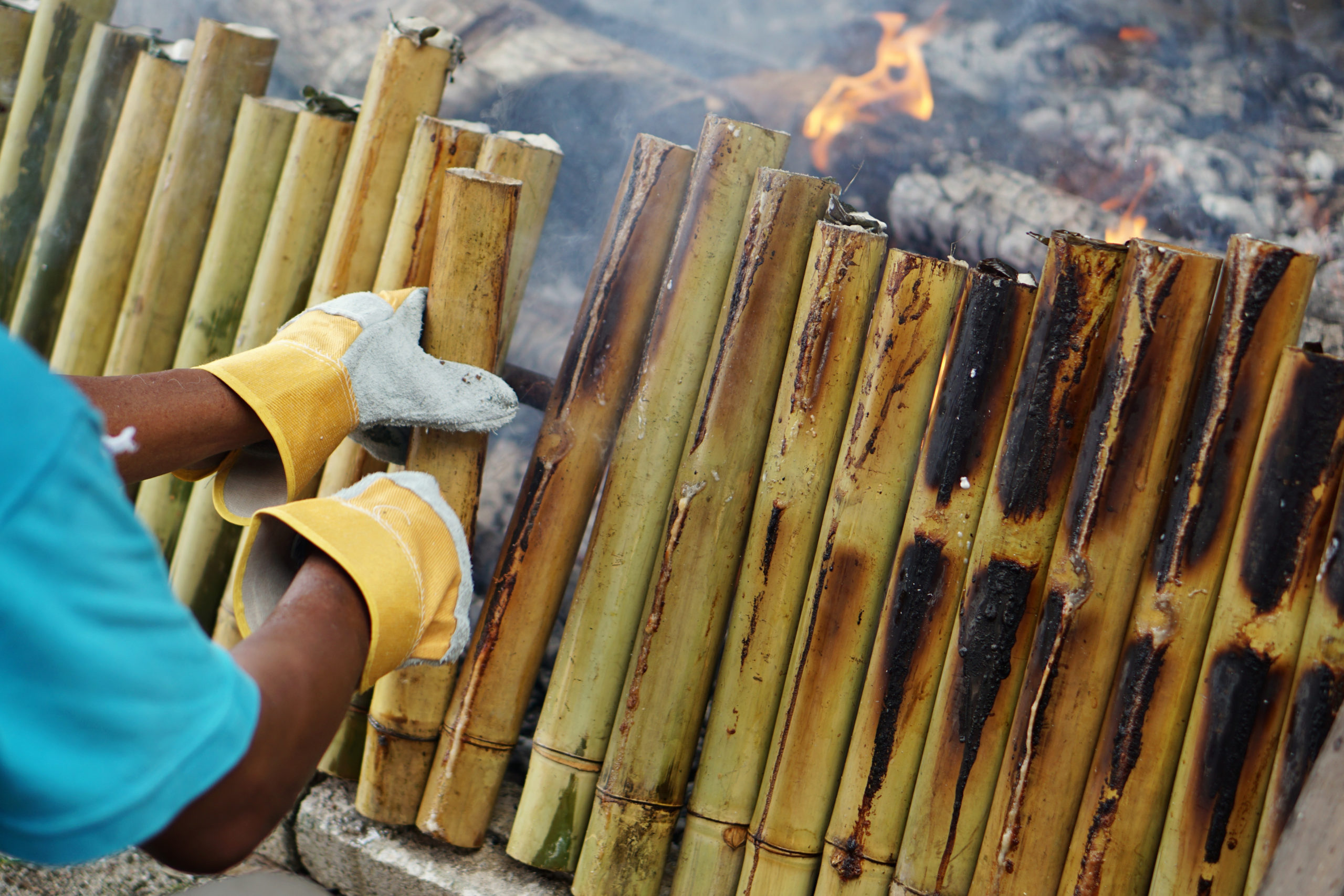Uniquely Malay dishes
Whether eating at a fusion restaurant or at a mamak, many Malaysians might not even stop to think about the rich origins of our flavours, and how unique our local cuisine truly is. Historically, our close ties with our regional neighbours (especially Indonesia and Singapore) have allowed us to adopt various regional dishes as symbols of our own national cuisine, with certain flavours and cooking techniques closely associated to our local produce, and cultural practices.
Hari Raya is certainly a time to enjoy the best of Malay cooking, as we eagerly await the table spread of delicious traditional dishes that are only served a few times a year. Whether cooking with your family, or visiting your friends and loved ones for ‘open house’, here are some Malay dishes that never fail to bring about a festive spirit and that we can proudly call our own.

- Ketupat
This dish has become one of the symbols of Hari Raya in Malaysia, often appearing on greeting cards and money packets.
Not to be confused with pulut (glutinous rice), ketupat is actually a compressed rice (AKA ‘nasi impit’) dish, whereby when cooked forms a rice cake. While there are modern methods of making ketupat, traditional methods include wrapping the rice in palm leaves or woven coconut leaves, then boiling or steaming the packets until the rice is cooked.
Meant to be eaten with savoury dishes, the iconic leaf-wrapped ketupat rice is served with curries and rendang on special occasions such as Hari Raya; but also widely available on daily menus, such in as a side for satay or cubed into gravy dishes like lontong.

- Masak lemak
Said to be from the state of Negri Sembilan, it can be argued that the full name for this dish is actually ‘masak lemak cili api’ – referring to the spiciness (often from bird’s eye chillies or cili padi) that is often preferred by enthusiasts of this special fare.
While the term ‘masak lemak’ sounds like a decadent way to describe a dish, in Malay cooking it actually refers to the use of coconut milk. While chicken is most common meat used for this dish, swapping poultry for a different protein like beef is also welcome.
A masak lemak recipe utilises some of the most flavourful local / regional ingredients such as tamarind, lemongrass, turmeric and coconut milk, resulting in an aromatic gravy in a distinctive yellowish tone.

- Rendang
Credited to the Minangkabau people of Sumatra, Indonesia, rendang is a kind of southeast Asian dry curry, most commonly made with beef – though variations of lamb, goat and even poultry like chicken have also become quite common.
A typical rendang recipe consists of starting with a blended spice paste, lemongrass as a key ingredient, and ultimately slow-cooking the protein-of-choice with coconut milk and kerisik (toasted grated or desiccated coconut) for a few hours until the meat is tender and gravy is thick or almost fully dried out.
A Hari Raya favourite that has earned its popularity as a star of regional cuisine, rendang is a dish that gets mouths watering at the mere mention of it!

- Lemang
Different from ketupat in that the rice in lemang is more of a pulut (ie. glutinous/sticky rice), but similar to ketupat in that it is also known for its traditional preparation method, as well as for being a top choice accompaniment to rendang.
Cooked in a hollowed out bamboo with coconut milk and salt, the rice is protected from the bamboo tube with a layer of banana leaves. Once cooked, the rice takes on a cylinder shape once ejected from its bamboo casing, and is cut into discs for serving.

- Ayam Masak Merah
Translating to ‘chicken cooked red’, this dish uses similar spices that you might find in a curry, but gets its distinctive red hue from the use of chillies and tomato-based ingredients (whether fresh fruit or puree). While the heat of this dish can be easily adjusted to preference by omitting or including chillies, one tip most homecooks advocate for is to first coat the chicken pieces in turmeric and fry them before incorporating into the gravy.
Served both for special occasions such as Malay weddings and Hari Raya, as well as a staple menu item in Malay nasi campur restaurants and is even available in some mamaks.
This article got you thinking about what you would like to eat for buka puasa? Find Halal and Muslim-friendly (pork-free) eateries for Dine-In or Delivery on the GemSpot app today!
- For any minimum order of RM50, our Halal merchants will even send you a FREE box of Raya-inspired Dove 3-ply masks!
- And all throughout the fasting month, enjoy a super-low Delivery Fee of only RM1 for distances up to 15km!
